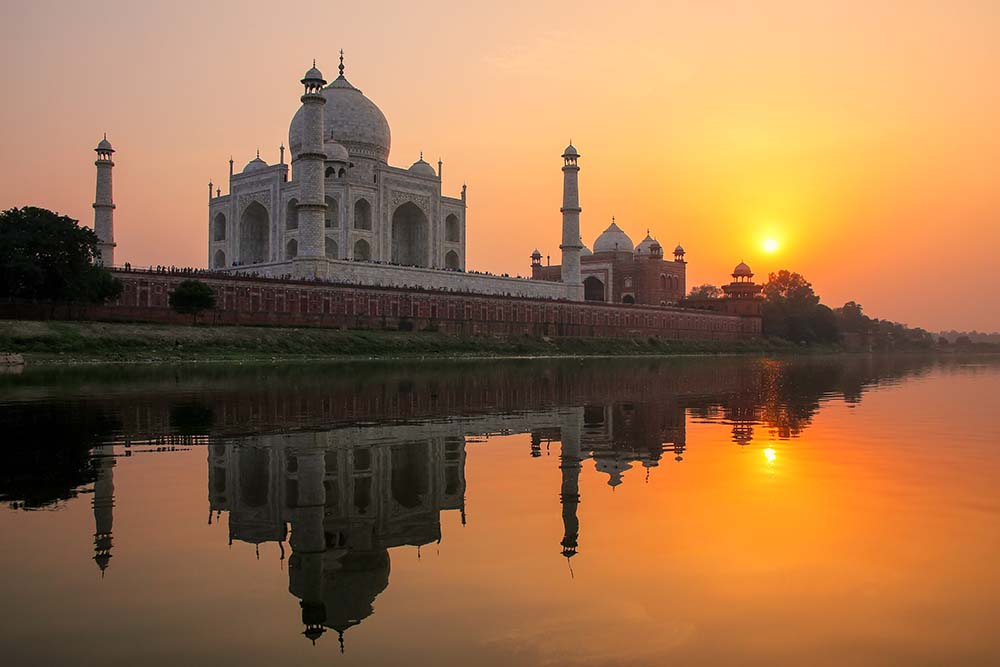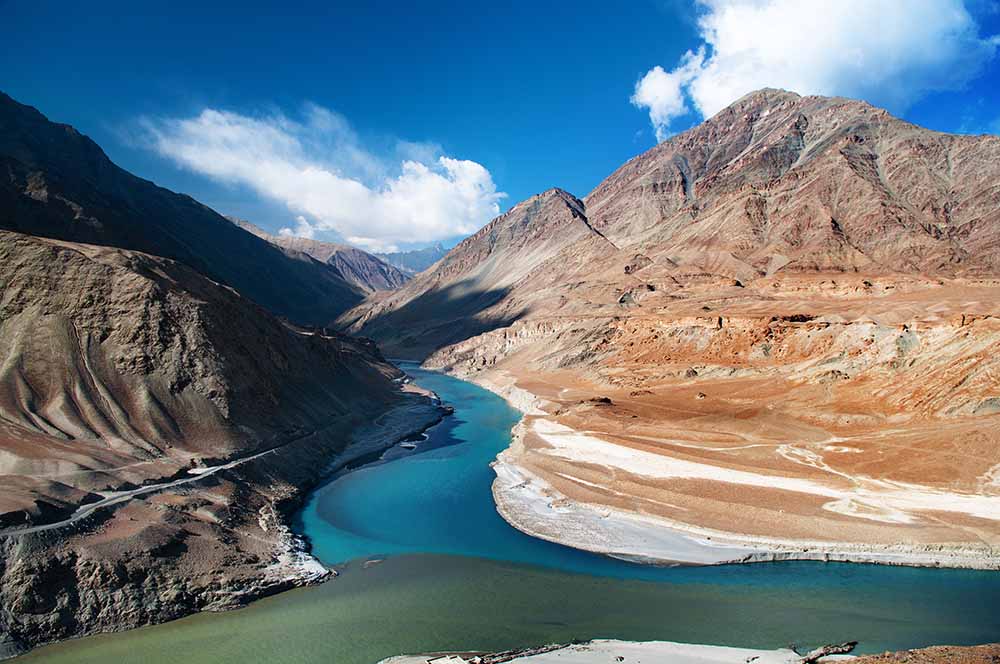India is renowned for its cultural diversity and rich heritage. Apart from this, our country is also rich and diverse in terms of rivers. These water bodies contribute to the economy, beauty and heritage of the country. Many folklore tales, livelihood sources and economies are dependent on these water resources. India’s longest river is Ganga and its tributaries.
The rivers of the country are basically divided into two- the Himalayan rivers and the Peninsular rivers. Himalayan rivers of India originate from the Himalayas whereas Peninsular rivers come from the banks of the peninsula. The water bodies of the Himalayas are perennial whereas the ones situated in the peninsula are rain-fed. Now let us have a look at the rivers of India to get detailed information on the topic. Without any further delay let's start the discussion on areas such as how many rivers in India, the major rivers of India, etc.
Why are rivers important for every nation?
Rivers are considered one of the most important creations that support human civilisation. The initiation of human life was possible thousands of years ago due to the presence of water. So, a river plays an important role in the origination of human life on earth. The major part of human civilisation was born in the river valleys. Rivers carry minerals, sediments and other essentials with them that are considered useful for human life. In addition, water bodies can support the economy by promoting trade and commerce. It can also promote irrigation and help in the development of hydroelectricity. Most importantly they are considered freshwater sources that are essential for the human race, plants and animals of every country.
The list of rivers of India is given below:
Sr.No | River's Name | Length in India (in km) | Total Length (in km) |
10. | Tapi | 724 | 724 |
9. | Kaveri | 800 | 800 |
8. | Mahanadi | 890 | 890 |
7. | Brahmaputra | 916 | 916 |
6. | Indus | 1,114 | 1,114 |
5. | Narmada | 1,312 | 1,312 |
4. | Yamuna | 1,376 | 1,376 |
3. | Krishna | 1,400 | 1,400 |
2. | Godavari | 1,464 | 1,464 |
1. | Ganga | 2,525 | 2,525 |
1. Ganga – the Largest River in India
Ganga is popularly known as the Ganges River. It is the most sacred river of the country according to Hindu mythology. This waterbody is surrounded by the Indian subcontinent. It is termed the largest river in India.
The most important pointers related to the river are as follows:
● Ganga River originates from River Gangotri.
● The main tributaries of Ganga are River Koshi, River Gandak, River Son, River Yamuna, River Ghaghara, and River Gomti.
● The adjoining states of River Ganga are West Bengal, Uttar Pradesh, Bihar, and Uttarakhand.
● It discharges in the Bay of Bengal.
● The waterbody contains faunas including 140 fish species and 90 land and water species such as gharial and dolphins. It also contains some of the water bodies that are included in the IUCNs endangered list.
● The total covered by the river is 2,525 km.
2. Godavari – the Second Largest River in the Country
River Godavari is known as the Dakshinganga or the South Ganges. It is the second-largest river in the country. The freshwater body is sacred according to Hindu beliefs and the banks have several destinations that have thousands of visitors every year.
● Godavari discharges in the Bay of Bengal.
● The adjoining regions of Godavari include Rajahmundry, Nanded and Nasik.
● It originates near Nashik, Maharashtra.
● The principal tributaries include the Sabari rivers, Purna, Indravati and Pranhita.
3. Krishna – the Third Largest River of India
Krishna is considered the third largest river in the country. It is spread across an area of 1,400 km. In addition, according to professionals, the river is the longest in terms of water inflow and river basin area.
● The adjoining states of the river include Andhra Pradesh, Karnataka, Telangana and Maharashtra.
● It originated in the areas of Western Ghats at an altitude of 64 km from the Arabian Sea and around 1,337 m north of the area of Mahabaleshwar.
● The main tributaries of the river include Tungabhadra, Ghataprabha, Panchganga, Bhima and Dudhganga.
● Krishna is considered the principal irrigation source of Andhra Pradesh, Karnataka, Maharashtra and Telangana.

4. Yamuna – the Fourth Largest River of India
Yamuna is considered the fourth longest river in India. It is also popularly known as Jamuna. The river has immense religious significance and is stretched over a distance of 1,376 km.
● The most important adjoining states of Yamuna include Uttar Pradesh, Uttarakhand, Delhi, Haryana and Himachal Pradesh.
● It originated from the glaciers in the Uttarkashi district of Uttarakhand.
● The primary tributaries of Yamuna include Tons, Sindh, Ken, Betwa, Chambal, Rishiganga, Giri, Sharda, Hindon, Sasur and Hanuman Ganga.
● It is popularly known as Jamuna that originated from the Yamunotri glaciers at the Bandarpoonch peak in the Uttarkashi district of Uttarakhand.
5. Narmada - the Fifth Largest River of India
Narmada river is also known as the Rewa and Nerbudda. It is considered one of the most sacred waters in India. Narmada is one of seven heavenly glasses of water according to Hindu mythology.
● Narmada discharges itself in the Arabian Sea.
● It originated from Amarkantak in the region of Madhya Pradesh.
● It is one of the largest rivers in India and is ranked in the fifth position.
● Narmada is also called the ‘Lifeline of Madhya Pradesh and Gujarat’.
● It is stretched across an area of 1,312 km providing water resources to both states.
Other longest rivers of India
1. Tapi River
Tapi is one of the three rivers that originated from the areas of the Indian Peninsular region. It flows from east to west. The overall distance covered by the river is 724 km. The adjoining states of the river include Gujarat, Maharashtra, and Madhya Pradesh.
2. Kaveri River
Kaveri is also known as Cauvery. It is a sacred river in South India and is the centre of a significant irrigation canal project. It is the ninth largest river in India and stretches over a region of 800 km.
3. Mahanadi River
Mahanadi due to its natural calamities is known as the ‘distress of Odisha’. It discharges into the regions of the Bay of Bengal.
4. Brahmaputra River
Brahmputra is the second river of the country that originated from the banks of the Mansarovar mountains. The total distance covered by the river is 2,900 km. It discharges in the Bay of Bengal. One of the most famous Kaziranga National Park is situated on the Brahmaputra river.

5. Indus River
Indus is home to the historically famous Indus Valley Civilisation. It enters the region of Pakistan and the total length of the river is 3,180 kilometers. Indus discharges itself in the Arabian Sea.
6. Sutlej River
Sutlej is an ancient river of the country and is a tributary of the Indus river. It is one of the rivers that give Punjab its name. The river is spread across an area of 1,050 km.
7. Chambal River
It is one of the most famous tributaries of Yamuna. The river flows and covers 965 km of area. It originates from the Vindhya Range near Indore in Madhya Pradesh.
8. Beas River
Beas river flows through the state of Himachal Pradesh and Punjab. It covers an area of 470 km and is a major tributary of Sutlej. The river originates from the Beas Kund in the Dhauladhar range of the Himalayas.
9. Tungabhadra River
It is formed by the merging of the Tunga river and Bhadra river in the Shimoga district of Karnataka. The river is considered the major tributary of the Krishna river. The waterbody is a part of the South Indian Peninsula.
10. Sabarmati River
It arises from the hills of Aravalli and travels around the course of 48 km in Rajasthan and 323 km in Gujarat. The river also joins the Arabian Sea at the Gulf of Cambay. The river flows at its full speed in monsoon.
Conclusion
Many rivers in India are sacred according to Hindu beliefs. They are considered the lifelines of the country. Ganga is the largest river in India and is home to several sources of income and livelihood. Hope this list of longest and largest rivers in India helped you understand the importance of these rivers a lot better.
FAQs
Which is the largest river in India?
According to experts, River Ganga is considered the largest river in India. It is spread across an area of 2,525 km. It is a major source of income for various fish species and water species such as dolphins and gharial. The river also offers income sources to people.
What is the significance of river Narmada?
Narmada is considered the ‘Lifeline of Madhya Pradesh and Gujarat’ as it has contributed immensely to the development of these regions.
Which is the longest river in India?
The Indus river is considered the longest river in the country. It is stretches around an area of 3,180 km.